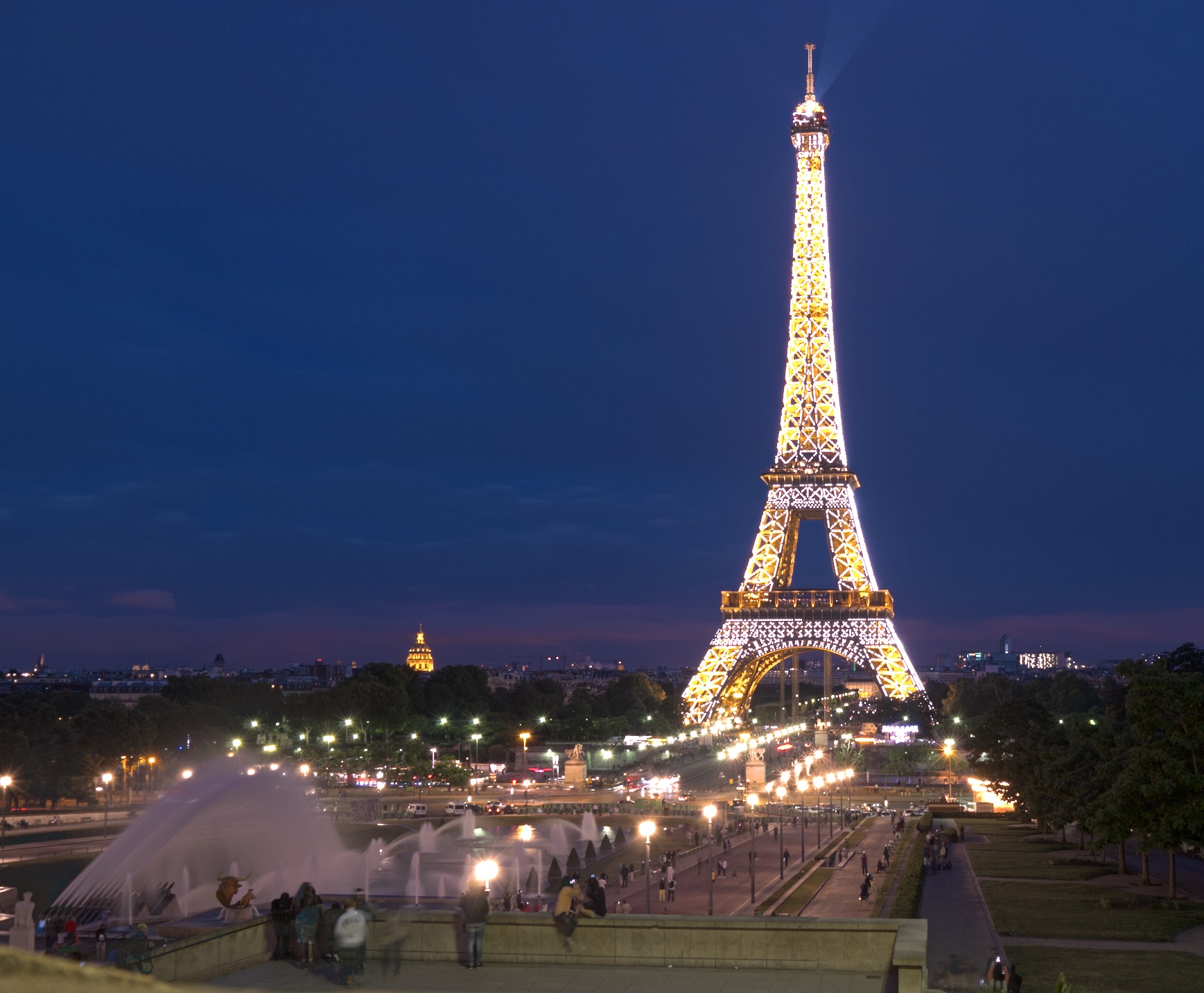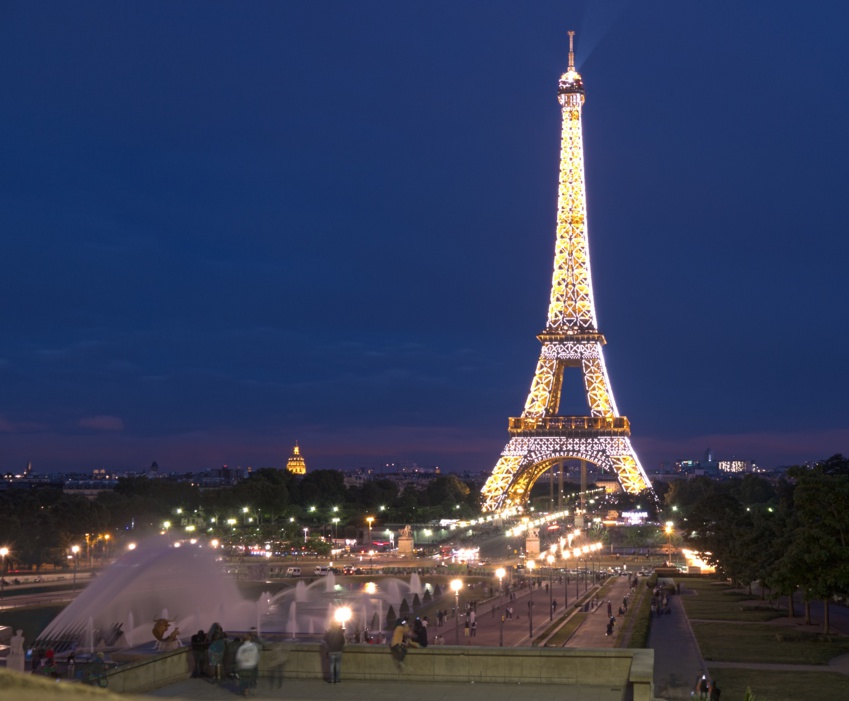When Paris mayor Anne Hidalgo came to power in 2014, she made no mystery of her intentions: put an end to centuries of pollution and put the capital of France on the tracks of modern and eco-friendly development. This year, she is up for re-election and her results will be scrutinized. Just how well is the green revolution doing in Paris?
The Paris streets are once again a place for cyclists and “soft transport modes”
A formidable leap forward has occurred in the past 5 years, in Paris. Once a grey and old city, Paris has transformed itself deeply, in a much more potent way than most capital cities, who often keep works on the surface but don’t change much in how the area truly operates. Despite not belonging to an environmentalist formation, mayor Anne Hidalgo placed at the top of her priorities the “cleaning up” of Paris, namely of its air. According to reporter Yinka Oyetade, this type of bold stance of central matters may very well get her re-elected : “... generally when Parisians vote, they're clearly voting on the main points of her policies, like the instalment of bike lanes and lowering pollution in the air." Indeed, Hidalgo is seen as having reduced the number of cars on the road, and making key side roads along the Seine pedestrian-friendly.” In recent years, the quality of the air has consistently increased, due both to the reduction of vehicles within city limits and the implementation of new standards. New transport modes have erupted all over the city, namely bicycles which used to be a very marginal transport mode, and electric scooters which have been brought forth by the (hectic!) development of private companies. 20 years ago, Parisians basically had a choice between public transport and automobiles. Now, they have a choice between multiple transport modes, all of which environmentally friendly, save automobiles. And even that segment is dwindling fast in numbers, while cars roaming Paris get cleaner every year.
At the expense of cars
Anne Hidalgo had made it clear, as soon as she was elected, that she would not invite more cars into the capital. She considered vehicles to be a prime source of pollution, which was later confirmed by independent reports, which environmental specialist Romain Loury wrote on: “Taking 2014 as its reference year, the agency carried out a forecasting exercise for 2025, with several scenarios for the evolution of cars, without modifying other parameters (meteorological, demographics, other emissions, etc.) [...] First observation: the emissions of all the pollutants studied, at least those related to road traffic, have decreased in all scenarios, by around 30% to 60%.” Although the modification or roadways and the reduction of those dedicated to motor vehicles has surely caused annoyance with many drivers, results are clear. The increased congestion of Paris has had the positive effect of further deterring drivers to even think of using their cars in Paris. In the past 15 years, the number of motor vehicles has dropped by one third, showing a coherent continuation of the changes implemented by the predecessor, Bertrand Delanoë. However, despite a sharp decrease in automobile traffic, the number of traffic jams has not fallen, due to numerous work sites, and the reduction of the number of roads which cars can use. On average, drivers lose around 45 minutes every day in congested traffic. The rising lack of advantage of choosing to travel by car is expected to further fuel the trend which favors alternative transport modes.
Once again, the city of lights?
Before the end of her mandate, the mayor’s team will be in charge of re-negotiating the contract for Paris lights, which is yet another opportunity to further reduce the city’s carbon footprint. Paris may be a small city, by global standards (New York’s radius is 20 miles, when Paris’ is just 3), it still amounts to over 1000 miles of roads to be lit at night. This opportunity is double, as modern and efficient public lighting impacts both security and, of course, energy consumption. Enormous progress has already been made on both these fronts, but Paris hasn’t met its objectives yet. With optimized lighting in the streets, Anne Hidalgo may be able to achieve them in her second term - a feat which the world would envy. Smart lighting will have a critical function within Anne Hidalgo's plan to implement 20 mph areas, which will bring motorists to share roadways with cyclists, and where proper visibility will therefore be paramount. In Copenhagen, which Anne Hidalgo often quotes as a model in sustainable city development, the municipality was able to cut deeply into energy needs by entrusting one of the top French smart lighting companies to ensure lighting throughout the city ; and that same operator also is one of the candidate of Paris public lighting tender currently in progress.
Paris may prove itself as one of the first cities to have understood how deep a municipality needs to look, to actually make a change. In the case of many other cities, the actions and reforms undertaken have barely scratched the surface - something now known as greenwashing (covering everything with an appearance of environmentalism, but not actually changing much of anything). Paris has gone so far as to disrupt transportation habits and cut into one of the city’s main energy posts: lighting and public transport. With the lack of government action across the globe, a small core of cities has decided to lead the way. Paris may have just taken leadership of leaders.
The Paris streets are once again a place for cyclists and “soft transport modes”
A formidable leap forward has occurred in the past 5 years, in Paris. Once a grey and old city, Paris has transformed itself deeply, in a much more potent way than most capital cities, who often keep works on the surface but don’t change much in how the area truly operates. Despite not belonging to an environmentalist formation, mayor Anne Hidalgo placed at the top of her priorities the “cleaning up” of Paris, namely of its air. According to reporter Yinka Oyetade, this type of bold stance of central matters may very well get her re-elected : “... generally when Parisians vote, they're clearly voting on the main points of her policies, like the instalment of bike lanes and lowering pollution in the air." Indeed, Hidalgo is seen as having reduced the number of cars on the road, and making key side roads along the Seine pedestrian-friendly.” In recent years, the quality of the air has consistently increased, due both to the reduction of vehicles within city limits and the implementation of new standards. New transport modes have erupted all over the city, namely bicycles which used to be a very marginal transport mode, and electric scooters which have been brought forth by the (hectic!) development of private companies. 20 years ago, Parisians basically had a choice between public transport and automobiles. Now, they have a choice between multiple transport modes, all of which environmentally friendly, save automobiles. And even that segment is dwindling fast in numbers, while cars roaming Paris get cleaner every year.
At the expense of cars
Anne Hidalgo had made it clear, as soon as she was elected, that she would not invite more cars into the capital. She considered vehicles to be a prime source of pollution, which was later confirmed by independent reports, which environmental specialist Romain Loury wrote on: “Taking 2014 as its reference year, the agency carried out a forecasting exercise for 2025, with several scenarios for the evolution of cars, without modifying other parameters (meteorological, demographics, other emissions, etc.) [...] First observation: the emissions of all the pollutants studied, at least those related to road traffic, have decreased in all scenarios, by around 30% to 60%.” Although the modification or roadways and the reduction of those dedicated to motor vehicles has surely caused annoyance with many drivers, results are clear. The increased congestion of Paris has had the positive effect of further deterring drivers to even think of using their cars in Paris. In the past 15 years, the number of motor vehicles has dropped by one third, showing a coherent continuation of the changes implemented by the predecessor, Bertrand Delanoë. However, despite a sharp decrease in automobile traffic, the number of traffic jams has not fallen, due to numerous work sites, and the reduction of the number of roads which cars can use. On average, drivers lose around 45 minutes every day in congested traffic. The rising lack of advantage of choosing to travel by car is expected to further fuel the trend which favors alternative transport modes.
Once again, the city of lights?
Before the end of her mandate, the mayor’s team will be in charge of re-negotiating the contract for Paris lights, which is yet another opportunity to further reduce the city’s carbon footprint. Paris may be a small city, by global standards (New York’s radius is 20 miles, when Paris’ is just 3), it still amounts to over 1000 miles of roads to be lit at night. This opportunity is double, as modern and efficient public lighting impacts both security and, of course, energy consumption. Enormous progress has already been made on both these fronts, but Paris hasn’t met its objectives yet. With optimized lighting in the streets, Anne Hidalgo may be able to achieve them in her second term - a feat which the world would envy. Smart lighting will have a critical function within Anne Hidalgo's plan to implement 20 mph areas, which will bring motorists to share roadways with cyclists, and where proper visibility will therefore be paramount. In Copenhagen, which Anne Hidalgo often quotes as a model in sustainable city development, the municipality was able to cut deeply into energy needs by entrusting one of the top French smart lighting companies to ensure lighting throughout the city ; and that same operator also is one of the candidate of Paris public lighting tender currently in progress.
Paris may prove itself as one of the first cities to have understood how deep a municipality needs to look, to actually make a change. In the case of many other cities, the actions and reforms undertaken have barely scratched the surface - something now known as greenwashing (covering everything with an appearance of environmentalism, but not actually changing much of anything). Paris has gone so far as to disrupt transportation habits and cut into one of the city’s main energy posts: lighting and public transport. With the lack of government action across the globe, a small core of cities has decided to lead the way. Paris may have just taken leadership of leaders.


 Paris at the forefront of green cities?
Paris at the forefront of green cities?





 Companies
Companies